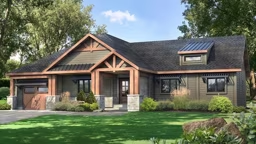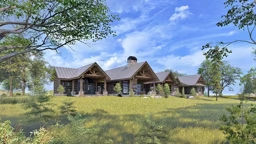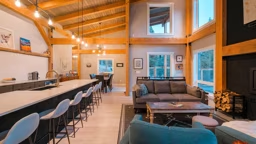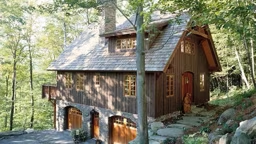
Whether it’s to reduce upkeep, live a simpler life, or to get the best value for their money, many timber home buyers are moving toward smaller, more efficient designs. But that doesn’t mean you have to shrink your dream home to the size of a studio apartment. Rather, it involves getting back to the basics of what you need to function. If you can relate, follow these design ideals for small-scale timber homes.
Understand how much space you actually need.
Despite preconceptions about the square footage you and your family need, until you actually see the dimensions, it can be hard to visualize. How people perceive space in their minds is called “volume metrics.” It’s a spatial calculation that your brain does automatically, and if these metrics are out of whack, it can make a space feel awkward. To get a better idea of how much space you need, tour model homes (even ones that aren’t timber homes) to get a good sense of how various dimensions and configurations will feel.Open up space overhead.
Whether it’s a full cathedral or an A-frame, adding height to your ceiling extends the space and allows it to live larger than it actually is. The cubic volume will create a perception of space that doesn’t actually exist on the floor. As a result it enables you to reduce the total square footage of a room without sacrificing comfort. And, it affords an opportunity to add a loft, which will increase your livable space at a reduced cost.Incorporate plenty of windows.
Windows are not only practical for taking advantage of the great views of nature prevalent with so many timber homes, but, like higher ceilings, windows can also distort the perception of a room’s size. Why? When you open up a building to the outdoors via windows, then you really start losing the perception of the size of the room.Vary your layout.
It’s easy to get trapped into a simple design concept of a main-level combination of great room, kitchen and dining room, with a master suite loft. But that doesn’t leave much room for personalization. Instead of a basic square, opt for an H- or T-shaped layout to create a more interesting interior. Such shapes will allow you to section off personal wings of the home and, with the inclusion of vaulted ceilings, can also permit the construction of varied rooflines, creating a more appealing exterior.Group related spaces.
Aim to decrease the space allotted to mechanical or plumbing materials. You can save money by stacking baths and keeping your plumbing in a zone-type area, so you don’t have to create a lot of runs and get into problems with dropped ceilings below. Otherwise, an additional built-up floor system may be necessary, tacking on unnecessary square footage.











